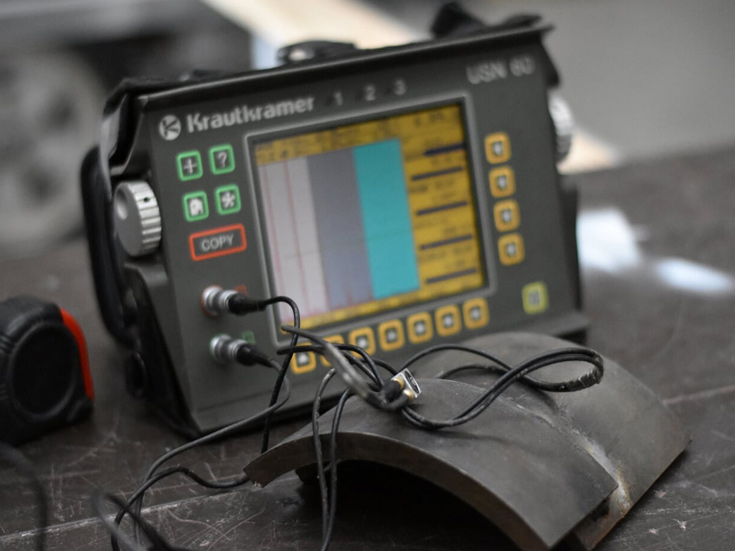
The ultrasonic contact inspection method is used for either the detection of subsurface flaws and irregularities in castings, forgings and welds, or for thickness gauging of tanks and pipes when only one side of the component is accessible.
Utilising the very latest digital equipment our highly skilled technicians manually scan the components using high frequency sound waves. This highly sensitive method is most adaptable since it can be applied to wide range of components of all shapes, sizes and thicknesses.
UT testing uses high frequency sound energy to conduct examinations and make measurements as it uses electronic equipment. Any material that transmits mechanical vibrations can be tested. UT detects both linear and non-linear flaws and permits three-dimensional interpretations. UT testing is a very useful and versatile NDT method as it converts electrical pulses into mechanical vibrations. These pulses travel across the tested specimen and reflect upon the flaws due to the different acoustic nature. The returning reflected pulses are then re-converted to electric energy and displayed as signals on a cathode ray tube (CRT). The position and the size of these signals correspond to the position and the size of the flaw.
Ultrasonic Testing is usually used for Steel and other metals and alloys. In some instances UT can be used on concrete and wood however the results are less clear. One of the benefits of applying UT is its accuracy in determining the depth of internal defects and the safety of this operation is much higher than other methods.
For more information or to discuss your requirements please contact Sonix NDT specialist
